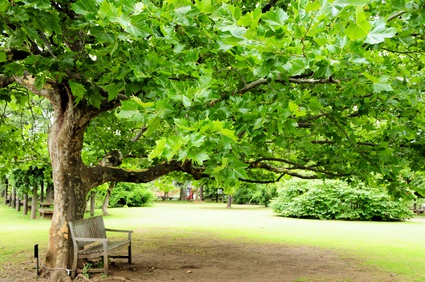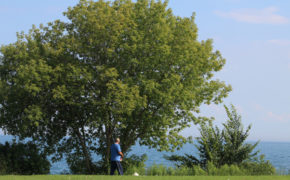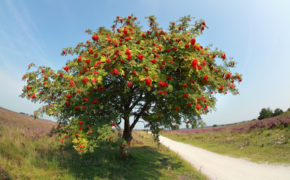
Get a quick no obligation quote It’s free and will only take a jiffy!
Sycamore Tree
Everything you need to know about the sycamore tree, from identification tips to typical characteristics; how to spot disease and the best way to maintain a sycamore tree.
The sycamore tree is part of the maple family. It is a large, broadleaf deciduous tree which is native to central, eastern and southern Europe. Now prevalent in the UK, its presence here is reckoned to date back to the Middle Ages. It’s a naturalised species here now and it’s the fact it has become such a popular species is down to the way its winged seeds spread and reseed with great ease.
The canopy of the sycamore tree is one of its redeeming features, and it is one of the most popular trees in parks and gardens for those seeking shade from the sun. The tree will grow anything up to 35 metres in height, and has a long lifespan of over 400 years.
Sometimes confused with the field maple tree, the sycamore has a more angular winged seed. Its Latin name, Acer pseudoplatanus, means ‘like a plane tree’.
General Facts
| Known as | Sycamore |
| Latin name | Acer pseudoplatanus |
| Location | Central, Eastern and Southern Europe |
| Foliage | Deciduous |
| Lifespan | 400 years plus |
Characteristics
| Height | Up to 35 metres |
| Spread | 4-8 metres |
| Appearance | A large deciduous tree with dark pink-grey bark that starts off smooth but cracks and forms small plates as it ages. Twigs are browny-pink and hair free. |
| Leaves | Leaves measure 7-16cm with five distinctive lobes. The stalks of younger trees are distinguished by their red colour. The veins of the leaves are hairy on the underside. |
| Flowers | Sycamore flowers are small in size and yellow-green in colour. They hang in spikes known as ‘racemes’. |
| Fruit | Sycamore flowers are both wind and insect pollinated. After pollination, the female flowers transform into characteristic winged fruits called samaras. |
| Found in | Parks, gardens and avenues |
Conditions
| Ideal soil | Moist but well drained, chalk, clay, loam or sand |
| Soil pH | Neutral, acid, alkaline |
| Aspect | North, south, east or west facing |
| Exposure | Full sun to partial shade; Sheltered or exposed |
Threats
| Pests | Sycamore gall mite, aphids, horse chestnut scale |
| Diseases | Sooty bark, Verticillium wilt, Phytophthora root rot, leaf spot, tar spot |
Sycamore Trees and Wildlife
The sycamore is a big pull for aphids, which means ladybirds, hoverflies and birds are also attracted in their droves as they feed on the green flies. Caterpillars of various moths will feed on the leaves. These include the maple prominent, the plumed prominent and the sycamore moth. Bees and other pollen loving insects are magnetised to the flowers, and birds and small mammals regularly feast on the seeds.
Sycamore Tree Symbolism and History
It is not exactly clear when the sycamore tree was introduced to the UK. It may have come to England courtesy of the Romans, although by some accounts it first appeared to be introduced during the Tudor era of the 1500s. By the 1700s it was more widespread, and then by the mid-1800s the earliest reports of its naturalisation came about.
Sycamore trees were used in Wales to craft ‘lovespoons’. When a decoratively carved spoon was presented to a loved one it was considered a token of affection. The tradition dates back to the 1600s but is still alive to this day.
The winged seeds of the sycamore are commonly known as ‘helicopters’ and children across the UK use them to make models and to compete in flying competitions.
The Importance of Sycamore Trees
Sycamore produces strong, hard timber that is pale cream in colour and has an attractive, fine grain. For this reason it is popular in furniture making and widely used as a veneer which is particularly eye-catching when crown cut or figured. Sycamore is also popular for kitchenware making as the wood does not stain or taint the food.
A mature sycamore tree is very wind tolerant which makes it perfect for exposed or coastal areas as a windbreak. Sycamores are also highly tolerant of pollution, which is why they are often used for ornamental purposes around towns and cities and along avenues.
Caring for a Sycamore Tree
Regular pruning of the sycamore tree is essential as it tends to grow into an odd shape with severe angles and drooping branches which sometimes wrap around the tree.
Regular pollarding is good practice in order to maintain a reasonable height, especially for sycamore trees that are growing in public places. Pollarding is also good for keeping the canopy in good shape, although it needs to be done regularly from an early age. Crown reduction is also commonly used in order to let light through and is a good idea in order to reduce the risk of neighbour disputes.
Care must be taken to ensure sycamore tree pruning is carried out at the right time of year so as to avoid disease ingress and it is also important to make sure that no damage is done to the collars of branches by keeping the pruning flush with them. If in doubt at any point, consult a qualified tree surgeon.
For more about sycamore tree pruning, follow this link.
When you are caring for your sycamore tree, you should be on the lookout for sooty bark (cryptostroma corticale). Following continuously hot weather, sooty bark will lead to partial or total crown wilting which can eventually be fatal.
Also look out for Verticillium wilt. This is a fungal disease that penetrates the tree through the roots. It leads to wilting, yellowing leaves and dieback. Another issue is Phytophthora root rot which causes yellow, sparse or wilting foliage together with branch dieback.
Leaf spot and tar spot are also common problems, however these aren’t thought to be too risky. Bark stripping by grey squirrels is another minor issue.
When it comes to pests, have a look for signs of the horse chestnut scale insect which is one of the main concerns, although it doesn’t usually affect sycamore trees unless they have been deprived of nutrients or water. Symptoms to look out for are white circular egg masses partially covered by brown shells on trunks and larger branches. These generally appear in early summer.
If you have detected any of these issues, do not hold back in calling in professional assistance. By the same token, if you want your sycamore tree to retain excellent health and to look as eye catching as possible, the most astute course of action is to seek professional guidance from a suitably qualified tree surgeon.
If you have a sycamore tree that would benefit from expert care and attention, why not contact T.H. Tree Services? As fully qualified and highly experienced tree surgeons, we can offer detailed skill and knowledge across all areas of sycamore tree care. For a free, no-obligation quotation, call us on 01268 642814 or get in touch here.
Had a fallen tree in the early hours of Monday morning, called for quote and the team had it cleared on the same day. Really good communication when the lads were onsite and did a great job. Lots of pride in their work shown with the thorough clear up. Would thoroughly recommend.
Thank you Stuart for your kind review. We were glad to be able to help you with your fallen tree. If there's anything else you need in the future, please don't hesitate to get in touch.








